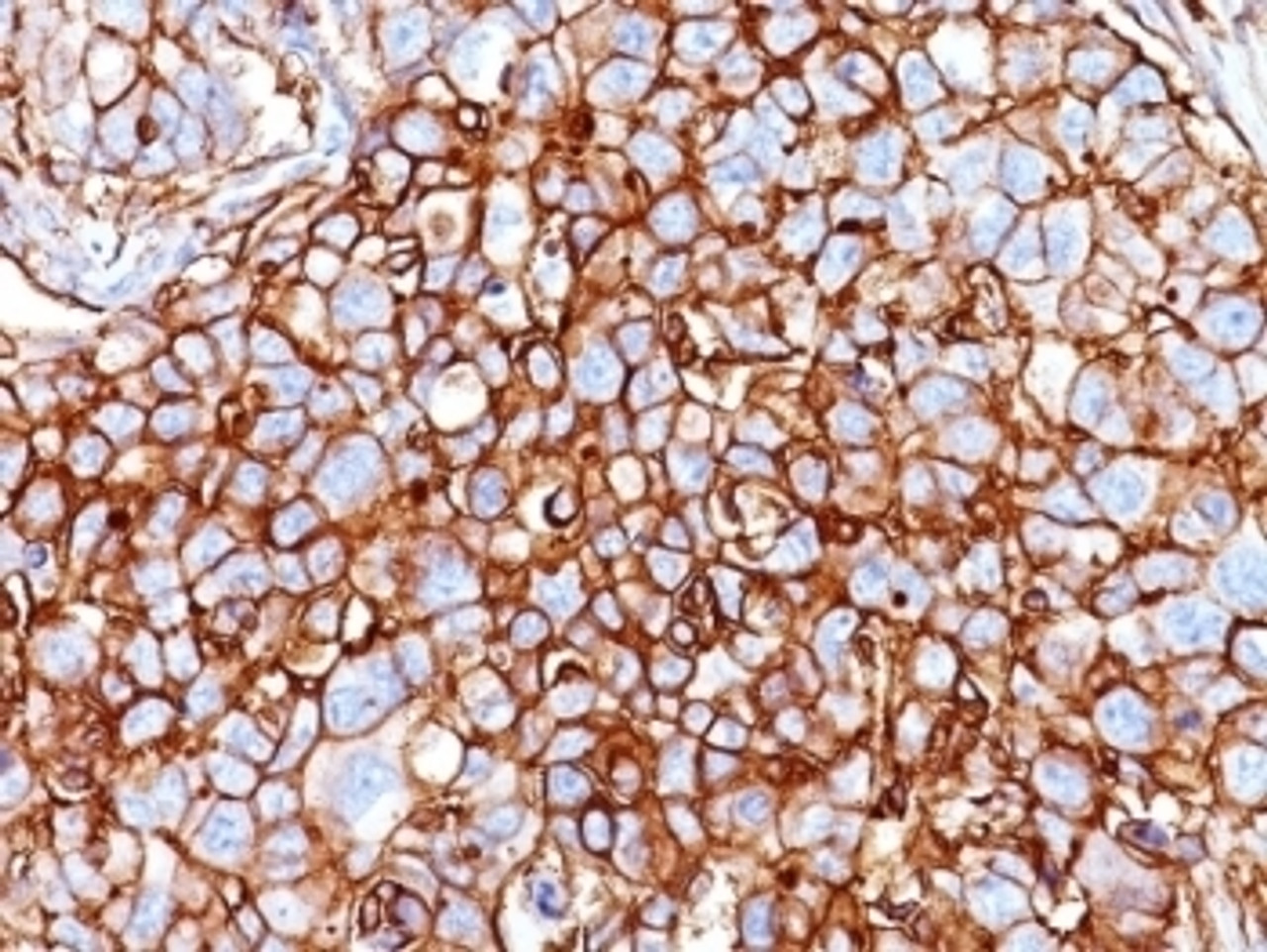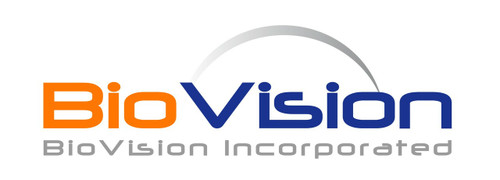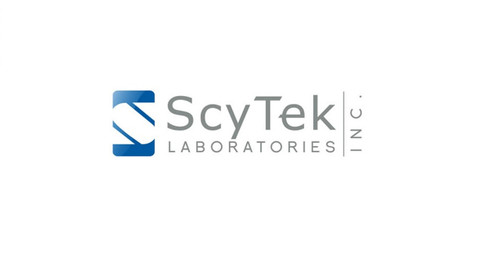Product Description
CD44 Antibody [HCAM/918] | 33-507 | ProSci
Host: Mouse
Reactivity: Human, Non-Human primate
Homology: N/A
Immunogen: Recombinant human protein was used as the immunogen for the CD44 antibody.
Research Area: Signal Transduction, Signal Transduction
Tested Application: Flow, IF, IHC-P
Application: Flow Cytometry: 0.5-1 ug/million cells in 0.1ml
Immunofluorescence: 0.5-1 ug/ml
Immunohistochemistry (FFPE) : 0.25-0.5 ug/ml for 30 min at RT (1)
Prediluted format: incubate for 30 min at RT (2)
Optimal dilution of the CD44 antibody should be determined by the researcher.
1. Staining of formalin-fixed tissues requires boiling tissue sections in 10mM Citrate buffer, pH 6.0, for 10-20 min followed by cooling at RT for 20 min.
2. The prediluted format is supplied in a dropper bottle and is optimized for use in IHC. After epitope retrieval step (if required) , drip mAb solution onto the tissue section and incubate at RT for 30 min.
Specificiy: N/A
Positive Control 1: N/A
Positive Control 2: N/A
Positive Control 3: N/A
Positive Control 4: N/A
Positive Control 5: N/A
Positive Control 6: N/A
Molecular Weight: N/A
Validation: N/A
Isoform: N/A
Purification: Protein G affinity chromatography
Clonality: Monoclonal
Clone: HCAM/918
Isotype: IgG2a, kappa
Conjugate: Unconjugated
Physical State: Liquid
Buffer: PBS with 0.1 mg/ml BSA and 0.05% sodium azide
Concentration: 0.2 mg/mL
Storage Condition: Aliquot and Store at 2-8˚C. Avoid freez-thaw cycles.
Alternate Name: CD44, CD44 molecule (Indian blood group) , CDW44, CSPG8, ECMR-III, HCELL, HUTCH-I, IN, LHR, MC56, MDU2, MDU3, MIC4, Pgp1, CD44 antigen, GP90 lymphocyte homing/adhesion receptor, Hermes antigen, cell surface glycoprotein CD44, chondroitin sulfate proteoglyc
User Note: Optimal dilutions for each application to be determined by the researcher
BACKGROUND: Recognizes a cell surface glycoprotein of 80-95kDa (CD44/HCAM) on lymphocytes, monocytes, and granulocytes (Leucocyte Typing Workshop V) . Its epitope is resistant to digestion by trypsin and chymotrypsin. It is a receptor for hyaluronic acid (HA) . Mediates cell-cell and cell-matrix interactions through its affinity for HA, and possibly also through its affinity for other ligands such as osteopontin, collagens, and matrix metalloproteinases (MMPs) . Adhesion with HA plays an important role in cell migration, tumor growth and progression. In cancer cells, may play an important role in invadopodia formation. Also involved in lymphocyte activation, recirculation and homing, and in hematopoiesis. Altered expression or dysfunction causes numerous pathogenic phenotypes. Great protein heterogeneity due to numerous alternative splicing and post-translational modification events. [UniProt]
 Euro
Euro
 USD
USD
 British Pound
British Pound
 NULL
NULL

![CD44 Antibody [HCAM/918] CD44 Antibody [HCAM/918]](https://cdn11.bigcommerce.com/s-452hpg8iuh/images/stencil/1280x1280/products/575344/811928/porsci_lo__79508.1648973713__52404.1649091897.png?c=2)


![CD44 Antibody [HCAM/918] CD44 Antibody [HCAM/918]](https://cdn11.bigcommerce.com/s-452hpg8iuh/images/stencil/100x100/products/575344/811928/porsci_lo__79508.1648973713__52404.1649091897.png?c=2)


![CD44 Antibody [HCAM/918] CD44 Antibody [HCAM/918]](https://cdn11.bigcommerce.com/s-452hpg8iuh/images/stencil/500x659/products/575344/811928/porsci_lo__79508.1648973713__52404.1649091897.png?c=2)








